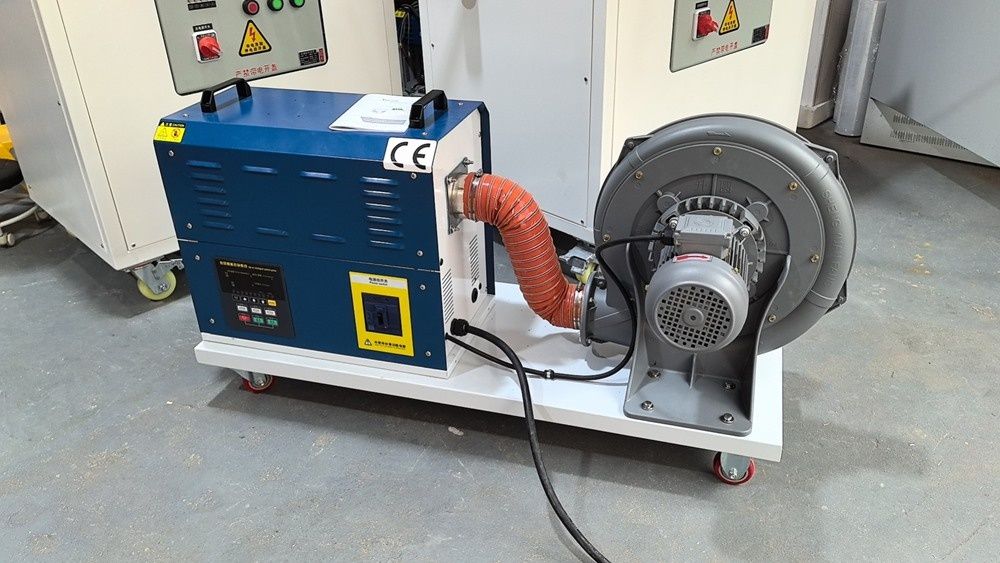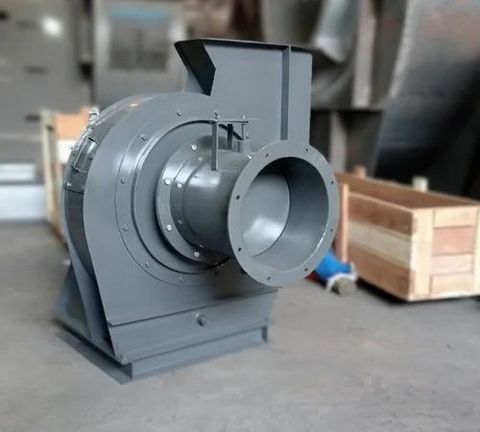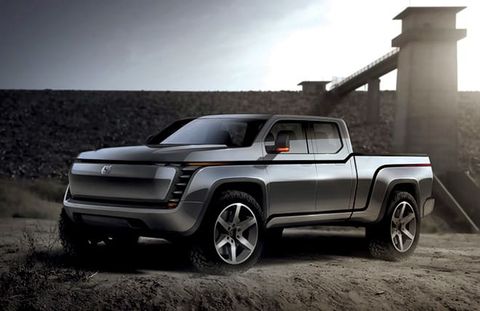Discover How Hot Air Blowers Improve Industrial Efficiency
Hot air blowers are essential industrial tools designed to generate and distribute heated air efficiently across various processes. They are used in manufacturing, packaging, drying, and material processing industries where controlled heat is required for tasks like shrinking, sealing, curing, or drying materials.
These devices operate by converting electrical energy or fuel into heat, which is then directed through high-speed airflow systems. Unlike conventional heaters, hot air blowers deliver precise temperature control and consistent heat distribution, making them highly reliable for industrial applications.

The concept of industrial air blowers emerged as industries sought faster, cleaner, and more efficient alternatives to open-flame or infrared heating. With the rise of automation, today’s blowers are integrated into production lines for enhanced performance and safety.
Importance
Hot air blowers play a critical role in improving energy efficiency, product quality, and process consistency. Their importance has grown in modern industries focused on sustainability and operational optimization.
Why this topic matters today:
-
Energy savings: Modern hot air blowers use less power while delivering more heat output, reducing operating costs.
-
Process precision: Temperature-controlled airflow ensures uniform heating, which is vital in processes like drying coatings or forming plastics.
-
Sustainability goals: Many industries are replacing gas-fired heaters with electric hot air blowers to reduce carbon emissions.
-
Safety and reliability: Enclosed heating systems minimize fire hazards and enhance workplace safety.
Industries that rely on hot air blowers include:
-
Packaging: Shrink wrapping and heat sealing.
-
Textiles: Drying and finishing fabrics.
-
Automotive: Paint drying and component molding.
-
Food processing: Sterilizing containers and drying packaging.
-
Electronics: Circuit board soldering and drying coatings.
By ensuring temperature accuracy, hot air blowers help businesses increase throughput, reduce downtime, and achieve consistent product quality—all of which contribute to overall industrial efficiency.
Recent Updates
Recent technological advancements have transformed how hot air blowers operate, emphasizing energy efficiency, automation, and sustainability.
Key industry trends and updates (2024–2025):
| Trend | Description |
|---|---|
| Smart Temperature Control | New models feature digital temperature sensors and PID controllers for better accuracy and consistency. |
| Eco-Friendly Designs | Manufacturers are developing energy-efficient electric blowers that meet international environmental standards. |
| Integration with IoT | Smart blowers can now connect to industrial control systems for remote monitoring and predictive maintenance. |
| Noise Reduction Technology | Advances in motor design and housing materials have reduced operational noise by up to 30%. |
| Global Market Growth | The global industrial blower market is projected to reach over USD 7.5 billion by 2025, driven by manufacturing expansion in Asia and Europe. |
In 2024, several companies began introducing variable speed drive (VSD) blowers, allowing users to adjust air output based on process requirements. This innovation reduces energy consumption and improves performance stability.
Additionally, industries are focusing on heat recovery systems that reuse exhaust heat from blowers, further improving efficiency and sustainability.
Laws or Policies
Hot air blower manufacturing and usage are governed by a range of international and national standards to ensure safety, efficiency, and environmental compliance.
Key regulations and standards:
-
ISO 5801 & ISO 12759: Define performance testing and efficiency standards for fans and blowers.
-
European Union Ecodesign Directive (2009/125/EC): Requires all industrial blowers sold in the EU to meet minimum energy efficiency criteria.
-
CE and RoHS Compliance: Hot air blowers used in Europe must comply with these certifications to ensure safety and restricted use of hazardous materials.
-
OSHA (Occupational Safety and Health Administration – U.S.): Sets workplace safety standards for heat-emitting devices, ensuring proper ventilation and operator protection.
-
Bureau of Energy Efficiency (India): Promotes energy-efficient electrical equipment, including industrial air blowers, under government labeling schemes.
Many governments also encourage the use of energy-efficient industrial machinery through tax benefits or certification programs, further supporting the transition toward low-emission production systems.
Tools and Resources
Selecting and maintaining the right hot air blower requires understanding specifications, energy use, and operational needs. Below are tools and resources to assist engineers, maintenance teams, and decision-makers.
Calculation Tools:
| Tool | Purpose |
|---|---|
| Blower Sizing Calculator (Engineering Toolbox) | Estimates airflow and pressure requirements. |
| Energy Cost Calculator (Department of Energy) | Compares energy consumption between blower models. |
| Thermal Efficiency Calculator (Process Heating Online) | Calculates heat transfer efficiency and losses. |
Industry Resources and Databases:
-
ASHRAE Handbook – HVAC Applications: Technical resource on air handling and industrial ventilation.
-
Energy Star for Industrial Equipment: Provides standards for energy-efficient hot air systems.
-
GlobalSpec & ThomasNet: Directories for sourcing certified industrial blowers and components.
-
Manufacturer Tools: Companies like Leister, Milwaukee, and Master Flow offer digital product configurators to choose suitable blower models.
Maintenance and Monitoring Apps:
-
Fluke Connect: Monitors temperature, airflow, and equipment health via sensors.
-
iAuditor by SafetyCulture: Enables safety checks for heat-emitting devices.
-
Smart Sensor Systems (IoT-based): Offer real-time data on temperature and motor performance for predictive maintenance.
Example Table: Blower Selection by Application
| Industry | Recommended Blower Type | Typical Operating Temperature | Key Benefit |
|---|---|---|---|
| Packaging | Electric hot air blower | 80–200°C | Precise heat sealing |
| Automotive | Industrial heat gun | 150–300°C | Paint curing |
| Food Processing | Sterile hot air unit | 60–120°C | Hygienic drying |
| Electronics | Compact air blower | 50–180°C | Delicate surface heating |
| Textiles | High-capacity air blower | 120–250°C | Quick drying |
Using the correct blower type for each application ensures energy optimization and prolongs equipment lifespan.
FAQs
Q1: What is the difference between a hot air blower and an industrial heater?
A hot air blower generates and directs heated air using controlled airflow, while an industrial heater simply emits heat. Blow dryers offer better precision and faster heat transfer for process applications.
Q2: Are hot air blowers energy efficient?
Yes. Modern models use variable speed motors, ceramic heating elements, and temperature sensors to minimize energy use without compromising heat output.
Q3: Can hot air blowers be used in hazardous environments?
Only specially designed explosion-proof or ATEX-certified blowers should be used in hazardous or flammable environments to meet safety standards.
Q4: How do I maintain a hot air blower?
Regularly clean filters, inspect heating elements, and ensure ventilation paths are unobstructed. Routine maintenance helps extend operational life and efficiency.
Q5: What power sources are used for hot air blowers?
They typically operate on electricity or compressed air. Electric models are preferred for energy efficiency, while air-powered versions are used where electricity poses risks.
Final Thoughts
Hot air blowers are indispensable in modern industry, offering precise heat control, safety, and energy efficiency across a wide range of applications. As manufacturing evolves toward automation and eco-friendly solutions, these devices continue to play a key role in optimizing operations.
By understanding current trends, regulatory requirements, and available tools, businesses can select and operate blowers that enhance both productivity and sustainability. The future of industrial heating lies in smart, connected, and energy-conscious systems that deliver reliability without compromising environmental responsibility.





